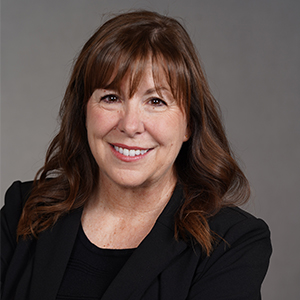HousingWire Editor in Chief Sarah Wheeler sat down with Matt Lehnen, chief technology officer at Deephaven Mortgage, to talk about building a tech stack for non-QM loans. Lehnen has been at Deephaven for the past five years leading the technology team.
Sarah Wheeler: What is DeepHaven’s philosophy on build versus buy?
Matt Lehnen: It’s situational. There are a lot of things out in the marketplace that are great solutions, that are mature products and there’s no reason that we wouldn’t explore them. And then there are some areas that are specific to our products in the non-QM lending space where there may not be anything in the market that is pre-built or off the shelf and the only opportunity to actually bring some of our lending products to market or execute on our on our strategies is to build something custom.
SW: What’s been a recent example of that?
ML: Our bank statement scenario tool, because a high number of our loans are bank statement income-based. And when we brought the product to market, there was no standard product that would do an income analysis. There are products that will pull data, but there’s nothing that will actually assemble that, do an analysis, make sense of the information, and calculate based on our guidelines.
SW: Because you do a lot of non-QM loans, where you might have to do more manual underwriting, how does technology fit into your overall process?
ML: It’s an integral part of the process. With non-QM, there are a lot of manual or semi-manual pieces, but there is still a lot of opportunity for technology to augment that. And anywhere that we can find time savings, reduce error, streamline a process for the users — that’s our main focus.
SW: Is there a part of your tech stack that you are very happy to have right now? Is there anything outperforming or outshining in this market?
ML: Our commitment to a unified tech stack has paid a lot of dividends. We’re in a virtualized environment so we’re very nimble, we’re very quick to deploy, we’re very scalable. When the market moves in a certain direction, we can deploy very quickly. With our bank statement analysis, income analysis, we have a very good set of partners working in the background that we’ve assembled our product on top of. We’re utilizing various Lego bricks of technology that are in the marketplace to assemble a very, very usable product.
SW: What are the particular advantages you offer brokers with your technology?
ML: There are different size broker shops, so for the smaller brokers, they don’t necessarily need to invest in their own technology to originate a loan. We provide the majority of the tools that they would need to prospect, whether that’s pricing engines, to be able to qualify and run eligibility on products, originating the file through our TPO portal and shuttling that loan to us. Deephaven’s operational staff is built specifically to be the one-stop shop for brokers. If the broker brings us a client, Deephaven gets the loan across the finish line in partnership with that broker.
SW: What kind of difference is AI making right now?
ML: AI is everywhere and everybody’s interacting with some component of AI every day, whether they know it or not. For example, all of our cybersecurity stack incorporates AI and machine models. All day, 24/7, across the board, in every facet of the network, there’s a portion of AI looking at something to find behaviors. So that’s an example of AI that’s completely behind the scenes.
On the front end, AI is deploying tools for our users. For example, if you have a year of bank statements to review — if you actually have PDF documents, or if you were to print it, they average hundreds of pages for a 12-month set of bank statements for a business. A human can review them, but it’s not time efficient. Our underwriters are best used for their expertise. They’re good at finding nuances, finding exceptions, making judgment calls. But behind the scenes, we let them train an AI model and machine learning model that says, okay, based on the inputs you give me, now we’ll let the system learn. And it becomes a training feedback loop.
If the human partner gives the AI good information, and teaches it, the AI, in turn, is going to make that human partner’s job easier. I think AI and machine learning and everything in that realm has tremendous potential, as long as it’s used ethically. It needs to benefit the employees, it needs to make people’s jobs easier, more repeatable, so we can use people for their expertise. We don’t need people doing manual menial tasks, we need people making judgment calls and making decisions.
And then for our clients and our customers: AI also has to be used fairly. You don’t want to just feed a bunch of data into a model, get the result and take it at face value. You want to interpret it and make sense of it. AI should be a tool to help get you somewhere faster, or double check your work or improve things. But you never want to rely solely on that for decisions, because you still have to be fair, equitable and do things in an in a transparent way.
SW: So your goal would not be to replace all of your humans with AI?
ML: No, it would be to use AI to do the tasks and activities that make our employees’ and partners’ lives and jobs more fulfilling.
SW: Where is technology helping you on cybersecurity?
ML: The technology helps us in every facet of it. There are so many endpoints — every single server, virtual machine, laptop, desktop, smartphone, every device that has the ability to connect or communicate with the internet is vulnerable. So we have to deploy tools on every endpoint, we have to collect telemetry from every endpoint, we have to aggregate all that telemetry and all that activity, and we have to make smart decisions as to what’s a true positive, what’s a false positive and what is just noise. And that’s probably the biggest area where the automation, the AI or machine learning, really helps. You have so much signal noise that you have to distill out the very specific signals that actually matter.
SW: Are you investing in technology in the midst of this slower market?
ML: The mortgage market has cooled with rates up, but for Deephaven and our non-QM products, and especially our DSCR product, there’s been an enormous uptick in volume. That’s a product tailored towards investors and there’s still a lot of investment activity in the market so that product has really taken off. So, volume has not necessarily ticked down for us, it’s just moved from one set of buckets into a different set of buckets.
To your question about technology, yes, we’ve been making enormous investments all year. And we’ll continue to do so. It’s streamlining. For the DSCR product, for example, we had to do a major revision of our workflows and processes to accommodate those products, make those products more efficient, because we know more of that volume would be coming through.
SW: Are there things that still defy automation or where tech doesn’t help as much as you might have thought when you got into the industry in 2007?
ML: In the broad sense of mortgage, tech has made enormous gains, especially in the agency and conventional space. The area where I thought we’d be further along is the consumer space, specifically, the back-end processes. Consumers will take an app online, a lot of them will e-sign documents, disclosures, they’ll upload documents electronically — they’ll even link their bank account. But we’re still not seeing as much adoption from the industry when it comes to closings. There’s still the traditional sit down at the table, and sign documents, which is due to a patchwork of different state laws and regulations. As a result, the post-closing processes are sometimes hindered, because those are still paper heavy processes on the back end.
If you knew at the inception of a loan process — from the very first interaction with a client or customer — that this could be a fully digital experience, that experience could be tailored one way. But if you don’t know if it can be fully digital or it might go down the conveyor belt only so far before it’s converted to non-digital — that’s where the some of the challenges lie.
SW: What keeps you up at night?
ML: The ever-changing landscape and how fast things accelerate. Anything that is true today is very likely to not be true tomorrow, and especially in the world of cybersecurity. It’s a complete arms race every day. For every advance in defensive techniques, defensive tooling, defensive products, there is probably three times as much investment in defeating those defenses.
And then on the mortgage technology side, it’s keeping up with products. What’s the next product? Did we make the right decision on where we put our resources, where we innovate? It’s a gamble. You don’t know, so we rely on capital markets and market research to advise us where things are going. The most important thing is anticipating the future and trying to make the right decisions now that are scalable for those future unknowns.
SW: Looking at the tech landscape, what makes you optimistic about the future?
ML: I think there’s still enormous demand for housing. There are also a lot of good things happening within the regulatory and lending environment on product mix and the way the agencies are adjusting to the new normal: the new makeup of families and what households are forming. I’m generally optimistic t






